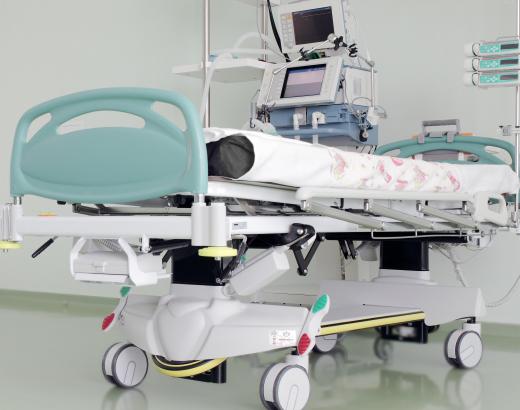A bed actuator is a device used to lift and lower beds or to adjust parts of the bed. These actuators are most often used by hospitals, so patients can easily lift themselves up. The power source that runs a bed actuator can be an electric motor or a hydraulic or pneumatic system; motors are simpler, though hydraulic and pneumatic systems are best for heavier patients and more frequent use.
The primary users of a bed actuator are hospitals and other healthcare facilities. These facilities use beds with actuators to easily position patients for comfort or to adjust their bodies for easy transport by the medical staff. Hospital beds often use multiple sets of actuators to adjust the bed in several positions.

Personal beds that make use of a bed actuator are typically much less complex that hospital versions, and a lot cheaper. They can be used for simple tasks such as lifting a person into a sitting position, or raising a person's legs and feet for increased comfort. Elderly or disabled people can use sets of actuators to lower and lift the entire bed so they can more easily get into and out of bed.

Most commonly, a bed actuator uses one or more small electric engines for power. It is not uncommon for a bed actuator to be rated for more than 600 pounds (272 kilograms) for a single-person bed. The electric engine usually turns the screws of an actuator arm through a bolt, causing the arm to expand and push up the payload. In reverse, the engine causes the screws to unwind and the height of the bed to decrease. The engine-based actuator also prevents damage to the bed or injury to the occupant in the event of a failure; if a failure occurs, the bed will just remain as it is.
Some forms of bed actuator use hydraulic and pneumatic systems. These are fairly rare, but they are necessary when lifting heavier patients and when paired with heavy beds. They work on the concept of using controlled compressed air or liquids to lift heavier loads that could strain or damage electric motors and the rotary parts of a mechanical actuator. This type of bed actuator also is quite a bit more expensive and requires more effort to maintain, and it lasts about as long as the less-expensive electric motor actuator.
